Vertical Machining Centers (VMCs)
CNC vertical machining centers (VMCs) remain machine shop staples. These milling machines have vertically oriented spindles that approach workpieces mounted on their table from above and commonly perform 2.5- or 3-axis machining operations. They are less costly than horizontal machining centers (HMCs), which makes them attractive to small job shops as well as larger machining operations. In addition, the performance of these machines has increased over the years, leveraging technologies such as high-speed spindles and advanced CNC capabilities (including conversational control programming). Ancillary equipment is also available to increase the flexibility and capability of these machines, including spindle speeders, angle heads, tool- and part-probes, quick-change workholding devices, and rotary indexers to enable four- or five-axis machining work.

ESSENTIAL READING
VIEW ALLMachining 101: What are Machining Centers?
Machining centers offer a wide range of possible operations, but that adaptability comes with the need to stay flexible and perform successful measurements at all times.
Read MoreWhy Was CNC Machining on Display at the Biggest Show for Additive Manufacturing?
Machining is a complement to AM as a means of finishing metal 3D printed parts. The increasing adoption of AM for production means more need for postprocessing, particularly machining.
Read MoreWhen Machining Long Parts, Machine Shop Climate Matters
Machining long titanium tufting needle bars required a milling machine with a super-long X-axis travel. But the real challenge was thermal compensation in the Georgia heat.
Read MoreWhy a Two-Spindle VMC? Double the Machining Without Double the Footprint
The two-spindle VMC increases output where space and other factors are constrained. With W-axis compensation for Z-height differences, setups don’t have to be perfect to use two spindles in tandem.
Read MoreBuying a VMC: Considering Toolchanger, Coolant Delivery and Chip Removal
Among characteristics like structure and spindle quality, here are a few factors to consider when buying a vertical machining center.
Read MoreBuying a VMC: The Basics of Spindle Speeds and Tapers
What’s the difference between CAT, BT and HSK tapers? These and other questions are important when considering a new vertical machining center.
Read MoreLatest Vertical Machining Centers News And Updates
5 Tips for Running a Profitable Aerospace Shop
Aerospace machining is a demanding and competitive sector of manufacturing, but this shop demonstrates five ways to find aerospace success.
Read MoreFryer Milling Machine Provides Fast Setup, Simple Programming
The MB-R toolroom bed mill is reportedly capable of single- or multi-part production with a 0.0002" accuracy.
Read MoreMitsui Seiki's Compact VMC Offers High-Precision Milling
The VL30 series is designed to machines high-precision mold inserts for medical, packaging, industrial and aerospace applications.
Read MoreNidec Double-Column Machining Center Reduces Non-Cutting Time
Powered by electricity, MV12BxII is designed for a diverse range of production environments, from high-precision surface machining to general parts machining
Read MoreDN Solutions' VMC Provides Diverse Five-Axis Machining
The company’s DVF Series comprises compact five-axis CNC machines that are designed for diverse five-sided or simultaneous five-axis applications.
Read MoreSunnen Offers Vertical Honing System for Heavy-Duty Parts
The SV-2010 AXYS CNC honing system integrates a vertical honing column with a high-resolution industrial camera and a heavy-duty i5 CNC-controlled servo X-Y table.
Read MoreFeatured Posts
10 Ways Additive Manufacturing and Machining Go Together and Affect One Another
Forget “additive versus subtractive.” Machining and metal additive manufacturing are interconnected, and enhance the possibilities for one another. Here is a look at just some of the ways additive and machining interrelate right now.
Read MoreTwin Spindle Design Doubles Production of Small Parts
After experiencing process stalls in the finishing stage of production, Bryan Machine Service designed an air-powered twin spindle and indexable rotating base to effectively double its production of small parts.
WatchDigital Demo: People and History Drive Solutions
Bourn & Koch has long provided unique manufacturing solutions. However, the people who work at Bourn & Koch enable the company to deliver value to each partner they work with. From service to assembly to engineering, each step builds on the solution—helping you solve your most challenging manufacturing problems. (Sponsored)
WatchPositioned to Prevail: Designing Processes Around People
Stecker Machine Company shows that getting the most value from employees means valuing your employees.
Read MoreSMEC America Showcasing Machines' Reliability and Rigidity
SMEC America is running demonstrations on its machines both old and new at its IMTS booth, with engineers on hand to help answer questions.
Read MoreWhat to Do When Five-Axis Machining Is Off the Table
For Fischer USA, 3+2 machining with a high-precision rotary table adds flexibility without the cost of a full five-axis machine.
Read MoreFAQ: Vertical Machining Centers
What is a vertical machining center?
Horizontal and vertical three-axis machines differ primarily in the inclination of the spindle, with the spindles of horizontal machines parallel to the surface of the machine table and the spindles of vertical machines perpendicular to the surface, although individual constructions vary widely to support different applications.
For a vertical machining center, the X-axis controls left-and-right movement, parallel to the workholding surface; the Y-axis controls front-and-back movement, perpendicular to the X- and Z-axes; and the Z-axis controls up-and-down movement. Most machines use a fixed spindle and a moving table, or a fixed table and a moving spindle. Spindle rotation is never considered an axis.
What is a machining center?
Typically, machining centers are numerically controlled machines with multipurpose capabilities. This flexibility not only allows for productivity improvements but also allows for one machine to replace several single-purpose machines.
Machining centers provide the ability to perform several operations on a workpiece, from roughing to finishing, with a single setup.
What are some things to consider when buying a VMC?
Accuracy and Repeatability
The ability to machine parts to a tight tolerance and to do so time after time must be considered. That is where a machine’s design and construction come into play.
Thermal Growth and Components That Counter It
Machine stability is primarily affected by thermal growth. Spindles generate heat, as do ballscrews, machine tables and guideway systems. In addition, the faster a machine moves, the more friction and heat it generates. This heat contributes significantly to changes in the size and position of machine components, causing a machine to “grow” or distort and the location of the spindle nose or tool point to move unpredictably. Because of these shifts, one of the biggest challenges of five-axis machining is the inability of the control system to calculate the exact position of axis pivot points at all times.
A Firm Foundation
A machine’s foundation and placement on the shop floor can greatly affect performance. Although it may be OK simply to set commodity machines on an existing concrete or wood floor, machining at high rates with rapid axis acceleration may require the machine to be tied down so it doesn’t “walk” across the floor. Heavy depths of cut on some materials also may cause excessive vibration, requiring the machine to be securely anchored to the floor.
Spindle Speeds, Torque and Horsepower
Selecting a machine with the appropriate range of spindle speeds is a critical consideration. The trends in recent years have been toward coated tooling, smaller tools, shallower depths of cut and higher feed rates. Smaller tools require a higher spindle speed. Faster feeds and speeds deliver better surface finishes.
CAT, BT and HSK
After selecting the spindle that best meets the horsepower, spindle speed and torque requirements comes selecting the type or style of tooling taper and its size. Tooling taper refers to the peculiar cone shape of the portion of a toolholder that fits inside the opening of the spindle. Every spindle is designed to accept a certain standardized taper style and size. Other styles or sizes cannot be used. Three taper styles are primarily used today: CAT, BT and HSK.
Selecting the Spindle Taper Size
The size of the spindle taper and the corresponding shank taper has much to do with the weight and length of the tools being used and the amount of material to be removed.
Selecting the Toolchanger
The toolchanger specified for a new VMC must have an adequate number of tooling pockets and be able to accommodate the size and weight of the cutting tool assemblies.
Coolant Concerns
For certain applications, optional provisions for delivering coolant at high pressure directly through the spindle are recommended. Coolant pressure as high as 1,000 psi is intended to promote chip evacuation from deep bores in which chip breaking is directed at the tool point.
Chip Removal
Chip removal is an important consideration that is often overlooked in the evaluation of a new CNC machine. Whether chips are evacuated from the machining zone with water, oil or air jets, they will fall to the bottom of the machine. A smaller volume of chips can be removed by an auger, which is typically standard on most VMCs, but a large volume of chips may require a conveyor.

.jpg;maxWidth=300;quality=90)

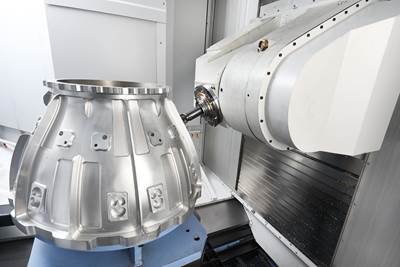


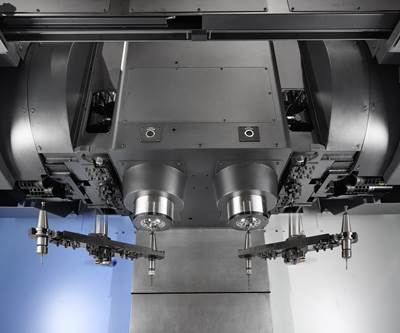
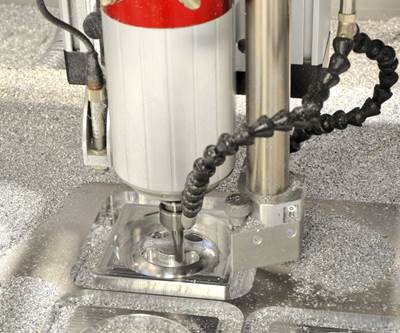
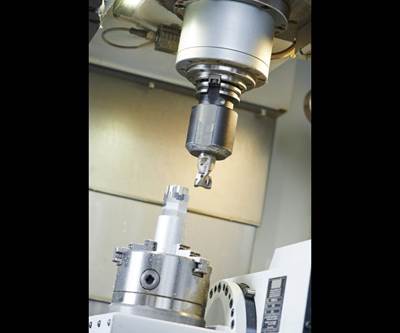
.png;maxWidth=300;quality=90)




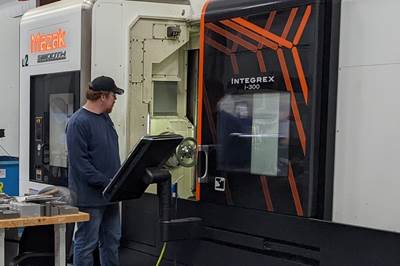

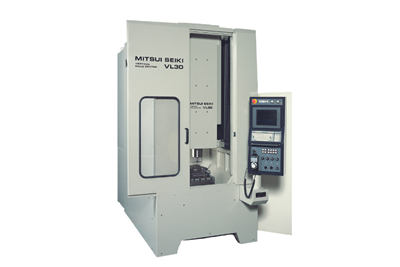
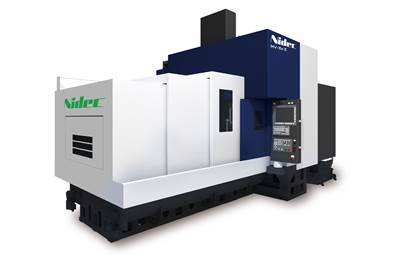

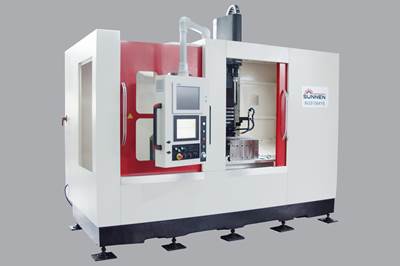




.jpg;maxWidth=970;quality=90)
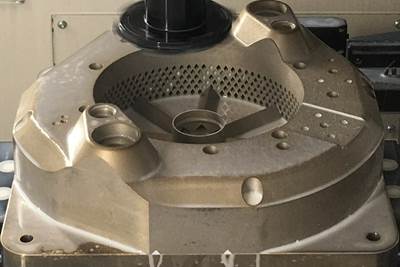
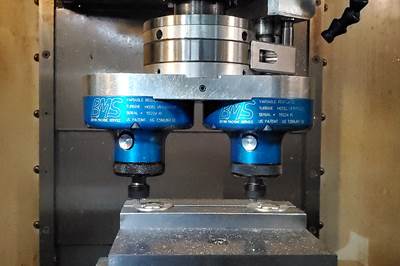

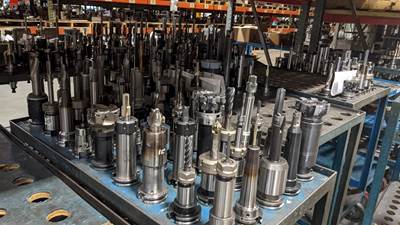
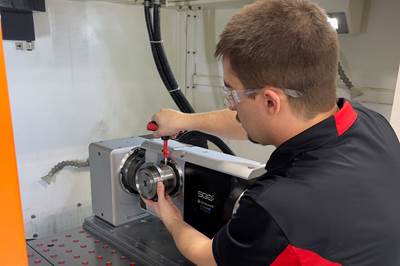



.png;maxWidth=300;quality=90)




